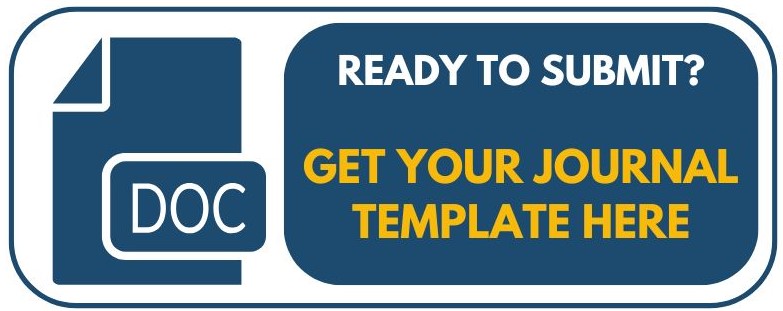A DIGITAL PRINTING APPLICATION AS AN EXPRESSION IDENTIFICATION SYSTEM.
DOI:
https://doi.org/10.51903/jtie.v1i2.135Keywords:
Human Computer Interaction, facial emotion recognition, facial expressions, facial action coding system, classifier combination, facial features, AU-Coded facial expression, CK database, digital printing.Abstract
Human Computer Interaction (HCI), a growing research field in science and engineering, aims to provide a natural way for humans to use computers as tools. Humans prefer to interact with each other mainly through speech, but also through facial expressions and gestures, for certain parts of the speech and displays of emotions. The identity, age, gender, and emotional state of a person can be obtained from his face. The impression we receive from the expression reflected on the face affects our interpretation of the spoken word and even our attitude towards the speaker himself. Although emotion recognition is an easy task for humans, it still proves to be a difficult task for computers to recognize user`s emotional state. Advances in this area promise to arm our technological environment by means for more effective interactions with humans, and hopefully the impact of facial expressions on cognition will increase rapidly in the future. Will do. In recent years, the adoption of digital has increased rapidly, and the quality has improved significantly. Digital printing has resulted in fast delivery and needs-based costs. This article describes a sophisticated combination classifier approach, an empirical study of ensembles, stacking, and voting. These three approaches were tested on Nave Bayes (NB), Kernel Naive Bayes (kNB), Neural Network (NN), Auto MultiLayer Perceptron (Auto MLP), and Decision Tree (DT), respectively. The main contribution of this paper is the improvement of the classification accuracy of facial expression recognition tasks. In both persondependent and nonpersondependent experiments we showed that using a combination of these classifier combinations gave significantly better results than using individual classifiers. It has been observed from experiments that the overall voting technique by voting achieves the best classification accuracy.
References
[1] C. Darwin, The Expression of the Emotions in Man and Animals, J. Murray, London, 1872.
[2] P. Ekman and W. Friesen. The Facial Action Coding System: A Technique For The Measurement of Facial Movement. Consulting Psychologists Press, Inc., San Francisco, CA, 1978.
[3] J. Russell and J. Fernandez-Dols, The Psychology of Facial Expression. New York: Cambridge Univ. Press, 1997.
[4] P. Ekman, W.V. Friesen, Constants across cultures in the face and emotion, J. Personality Social Psychol. 17 (2) (1971) 124–129.
[5] M. Suwa, N. Sugie, K. Fujimora, A preliminary note on pattern recognition of human emotional expression, Proceedings ofthe Fourth International Joint Conference on Pattern Recognition, Kyoto, Japan, 1978, pp. 408– 410
[6] De Silva, L. C., Miyasato, T., and Nakatsu, R. Facial Emotion Recognition Using Multimodal Information. In Proc. IEEE Int. Conf. on Information, Communications and Signal Processing (ICICS'97), Singapore, pp. 397-401, Sept. 1997.
[7] Chen, L.S., Huang, T. S., Miyasato T., and Nakatsu R. Multimodal human emotion / expression recognition, in Proc. of Int. Conf. on Automatic Face and Gesture Recognition, (Nara, Japan), IEEE Computer Soc., April 1998
[8] Pantic, M., Rothkrantz, L.J.M. Toward an affect-sensitive multimodal human-computer interaction. Proceedings of the IEEE , Volume: 91 Issue: 9 Sept. 2003. Page(s): 1370 –1390.
[9] Mase K. Recognition of facial expression from optical flow. IEICE Transc., E. 74(10):3474–3483, October 1991.
[10] Yacoob, Y., Davis, L. Computing spatio-temporal representations of human faces. Computer Vision and Pattern Recognition, 1994. Proceedings CVPR '94., 1994 IEEE Computer Society Conference on , 21-23 June 1994 Page(s): 70–75.
[11] N. Sebe, I. Cohen, A. Garg, M. Lew, and T. Huang. Emotion recognition using a Cauchy Naive Bayes classifier.In ICPR, 2002, to appear.
[12] H. Tao and T. S. Huang. Connected vibrations: A modal analysis approach to non-rigid motion tracking.In CVPR.pages 735-750, 1998.
[13] Ekman, P., Friesen, W. V., & Tomkins, S. S. Facial affect scoring technique (FAST): A first validity study. Semiotica~ 1971,3 (1), 37-58.
[14] N. Sebe, I. Cohen, A. Garg, M. Lew, and T. Huang. Emotion recognition using a Cauchy Naive Bayes classifier.
[15] Black, M. J. and Yacoob, Y. Tracking and recognizing rigid and non-rigid facial motions using local parametric model of image motion. In Proceedings of the International Conference on Computer Vision, pages 374–381. IEEE Computer Society, Cambridge, MA, 1995.
[16] Tian, Ying-li, Kanade, T. and Cohn, J. Recognizing Lower Face Action Units for Facial Expression Analysis.Proceedings of the 4th IEEE International Conference on Automatic Face and Gesture Recognition (FG'00), March, 2000, pp. 484 – 490.
[17] I. A. Essa and A. P. Pentland, ―Coding, analysis, interpretation, and recognition of facial expressions,‖ IEEE Transactions on Pattern Analysis and Machine Intelligence, vol. 19, pp. 757–763, July 1997.
Downloads
Published
Issue
Section
License
This work is licensed under a Creative Commons Attribution-ShareAlike 4.0 International License (CC BY-SA 4.0).
This license allows others to copy, distribute, display, and perform the work, and derivative works based upon it, for both commercial and non-commercial purposes, as long as they credit the original author(s) and license their new creations under identical terms.
Licensed under CC BY-SA 4.0: https://creativecommons.org/licenses/by-sa/4.0/






